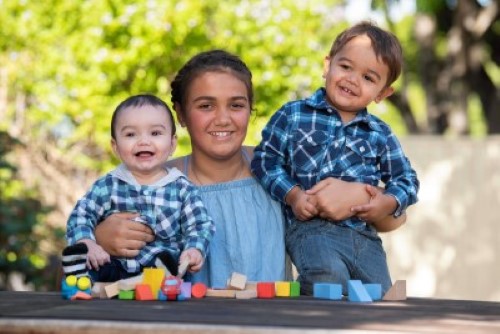Search
Research
The use of patient-report measures and intervention strategies for children and adolescents with chronic tinnitus: a scoping reviewChronic tinnitus during childhood/adolescence can be associated with impaired quality of life. Guidelines for managing paediatric tinnitus recommend assessment and interventions are often based upon the experiences and opinions of guideline committee members.
Research
Distinct Streptococcus pneumoniae cause invasive disease in Papua New GuineaStreptococcus pneumoniae is a key contributor to childhood morbidity and mortality in Papua New Guinea (PNG). For the first time, whole genome sequencing of 174 isolates has enabled detailed characterisation of diverse S. pneumoniae causing invasive disease in young children in PNG, 1989-2014.
Research
Engaging longitudinal cohort participants in a research priority setting process for the Raine StudyThe Raine Study is a long-running study looking at the health and well-being of a group of Western Australian families for over 35 years. Participants are at the heart of the study, shaping its research direction and communication. While participants have previously contributed to research grant development, they had not been directly involved in setting the Raine Study’s overall research agenda.
Research
Risk of otitis media in offspring following maternal prenatal stress exposureThere is limited but consistent evidence that suggests prenatal factors, including maternal stress, may contribute to susceptibility for otitis media. We aimed to determine the effect of multiple life stress events during pregnancy on risk of acute and recurrent otitis media in offspring at three and five years of age.
Research
Antibiotics or watchful waiting for acute otitis media in urban Aboriginal and Torres Strait Islander children?Chris Valerie Brennan-Jones Swift PhD Head, Ear and Hearing Health Aboriginal Co-Director, Djaalinj Waakinj Centre for Ear and Hearing Health;
Research
Ear and hearing outcomes in Aboriginal infants living in an urban Australian area: the Djaalinj Waakinj birth cohort studyDescribe the ear and hearing outcomes in Aboriginal infants in an Australian urban area. Aboriginal infants enrolled in the Djaalinj Waakinj prospective cohort study had ear health screenings at ages 2-4, 6-8 and 12-18 months and audiological assessment at ∼12 months of age. Sociodemographic, environmental characteristics, otoscopy, otoacoustic emissions, tympanometry and visual reinforcement audiometry data were collected.

News & Events
Ear health partnership brings brighter future for Aboriginal kidsA new partnership between The Kids Research Institute Australia, Dr George Sim and St John of God Murdoch Hospital will offer essential surgery at no cost for a group of Aboriginal children suffering severe ear infections.
Research
Ear Explorers: A ‘real-life research project’ enabling children to view inside their own ears using smartphone video-otoscopyChris Brennan-Jones PhD Head, Ear and Hearing Health chris.brennan-jones@thekids.org.au Head, Ear and Hearing Health Professor Chris Brennan-Jones is
Research
Koorlungkas yarning: Exploring the impact of OM on early language and communication skills in urban Aboriginal familiesDeborah Peter Lehmann Richmond AO, MBBS, MSc MBBS MRCP(UK) FRACP Honorary Emeritus Fellow Head, Vaccine Trials Group Honorary Emeritus Fellow Head,
Research
Safety and Immunogenicity of Neonatal Pneumococcal Conjugate Vaccination in Papua New Guinean Children: A Randomised Controlled TrialWe conducted an open randomized controlled trial in Papua New Guinea to compare safety, immunogenicity and priming for memory of 7-valent PCV (PCV7) given in...
